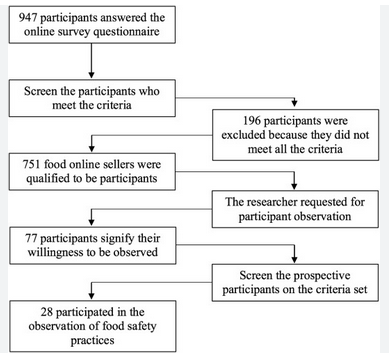To Determine the Level of Food Handlers' Understanding of Food Safety and Hygiene with the Goal of Publishing a Guidebook
Main Article Content
Abstract
Background: The first step in making sure the food you handle and make is fit for human consumption is to practise good food safety and food hygiene. Consumers are at risk for food poisoning and other food-borne illnesses if standards of food safety and hygiene are not strictly enforced. Protecting the health of consumers necessitates a focus on food cleanliness and food safety.
Material and Method: method based on evaluation. Fifty city of Karad food handlers participated in the study. We used a pre- and post-test design with a single sample. Non-probability The samples were selected with a deliberate strategy. Fifty individuals involved in the food service industry served as the sample size. Knowledge of food safety and food hygiene practises was assessed by structured questions on day one, an informative booklet was distributed on day seven, and a post-test was given on day ten. The information was catalogued and evaluated so that researchers could gauge food handlers' awareness of and adherence to best practises for preventing foodborne illness in their workplaces in Karad.
Result: Among the demographic variables examined, it was determined that there were exactly as many women as men. The majority (58%) of the samples were made up of people between the ages of 30 and 39, the majority (52%) had between 1 and 5 years of experience working in the food service industry, and 66% were vaccinated against food-borne illnesses. There was an 84% increase in knowledge about maintaining safe temperatures for food among those who work in the industry, a 90% increase in familiarity with properly preparing food, an 86% increase in familiarity with properly rinsing containers and equipment, and an 84% increase in familiarity with proper hand washing procedures. Due to this finding, it was raised in the follow-up test. The average knowledge score on the assessment (31.08+3.02) exceeded the baseline score of 16.50+4.40. This proves that educating adolescent girls with an information pamphlet about reproductive health is successful.
Conclusion: The research concluded that providing food handlers with an information booklet was an efficient way to boost their food safety awareness and hygiene practises. Food handlers' understanding of food safety and hygiene standards was found to improve when they were given an instructional booklet on the subject.
Article Details
References
Kathuria AK, Anand D. Safe, Healthy, and Sustainable Diets.
Baş M, Yüksel M, Çavuşoğlu T. Difficulties and barriers for the implementing of HACCP and food safety systems in food businesses in Turkey. Food Control. 2007 Feb 1;18(2):124-30.3)
Martins RB, Hogg T, Otero JG. Food handlers’ knowledge on food hygiene: The case of a catering company in Portugal. Food Control. 2012 Jan 1;23(1):184-90.
Muyanja C, Nayiga L, Brenda N, Nasinyama G. Practices, knowledge and risk factors of street food vendors in Uganda. Food control. 2011 Oct 1;22(10):1551-8.
Campbell PT. Assessing the knowledge, attitudes and practices of street food vendors in the city of Johannesburg regarding food hygiene and safety (Doctoral dissertation, University of the Western Cape).
Mokgatetswa BN. Regulation of the informal trading sector in the city of Tshwane.
Meysenburg R, Albrecht JA, Litchfield R, Ritter-Gooder PK. Food safety knowledge, practices and beliefs of primary food preparers in families with young children. A mixed methods study. Appetite. 2014 Feb 1;73:121-31.
Ko WH. The relationship among food safety knowledge, attitudes and self-reported HACCP practices in restaurant employees. Food control. 2013 Jan 1;29(1):192-7.
Monney I, Agyei D, Ewoenam BS, Priscilla C, Nyaw S. Food hygiene and safety practices among street food vendors: an assessment of compliance, institutional and legislative framework in Ghana. Food and public health. 2014;4(6):306-15.
Chukuezi CO. Food safety and hyienic practices of street food vendors in Owerri, Nigeria. Studies in sociology of science. 2010 Jun 19;1(1):50-7.
Glanz K, Rimer BK, Viswanath K, editors. Health behavior and health education: theory, research, and practice. John Wiley & Sons; 2008 Aug 28.
Grol RP, Bosch MC, Hulscher ME, Eccles MP, Wensing M. Planning and studying improvement in patient care: the use of theoretical perspectives. The Milbank Quarterly. 2007 Mar;85(1):93-138.

